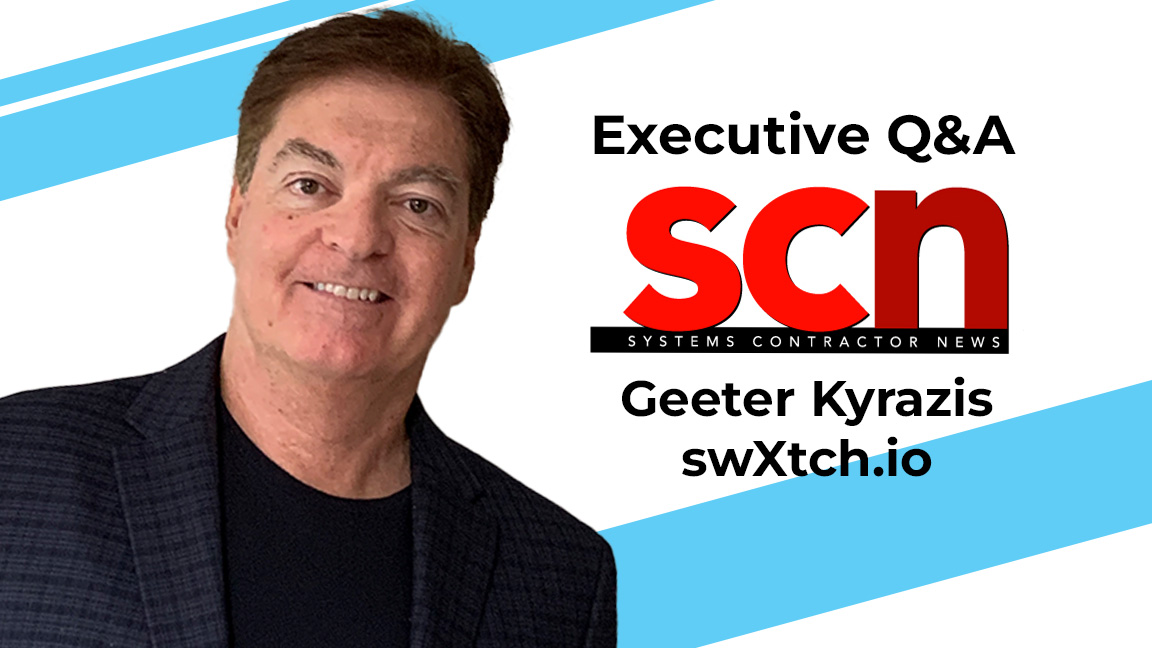SCN: What are your responsibilities with swXtch.io?
Geeter Kyrazis: Since the company was founded in January 2021, my responsibilities have a core focus of examining the market need for high-performance networking products and services. That includes the specific vertical applications in the media and entertainment space, and how we expand our roadmap, partner systems, and technology integrations to meet those needs.
[Cloud Power: The Evolution of Virtualized Production]
SCN: How has your background prepared you for your role?
GK: swXtch.io represents my ninth startup initiative, and my past business activities span across varied high-performance networking ventures. That includes hardware development, FPGA development, and software development. My first professional position involved software development for the Department of Defense when I was an Air Force officer. Over time I have started, managed, and sold digital imaging, import/export, and boutique software companies. I have also been a business unit manager for a Fortune 500 company. These activities have afforded me a diverse and flexible skillset to successfully start and grow a business from scratch.

SCN: What is cloudSwXtch and how is it different from other cloud-based solutions?
GK: cloudSwXtch is a virtual, high-performance network packet switch that runs as a software load in the clouds or on prem. It acts like a Cisco or Juniper-style network switch but is a software-only solution. The intent is to create a network on top of cloud networks, on-prem networks, or across both that mimics the way one would build a network from scratch with hardware. cloudSwXtch allows networks that don’t have certain features such as multicast, lossless UDP delivery, and standards conversion to exist in public clouds where they were not previously available. We extend on-prem feature sets to clouds through ground-to-cloud links and optimize their performance across one or more clouds.
SCN: What are some of the advantages of cloud production?
GK: Cloud production relies on the notion that a scalable architecture is valuable, and that you can stand up and spin down features and functions at will. That flexibility provides an ability to better control costs, and create, test, deploy, and scale new capabilities and products quickly. Cloud journeys are generally driven by a business’s current requirements and goals, as well as by the company’s internal IT ambitions and capabilities. The reason that clouds are growing so fast is because they offer an IT infrastructure for companies that don't want to make huge investments in their own infrastructure that might become obsolete or hard to manage.
[Cloud-Based Production: Opportunity or Threat for Integrators?]
SCN: Are your solutions designed for public or private cloud—or maybe your own cloud?
GK: We offer software solutions that run on top of all the different virtualization layers defined as being cloud. Each public cloud has its unique way of exposing itself to customers. Anyone that builds a private cloud would have to have similar things that they do, and even non-cloud, bare metal implementations can benefit from the features we add. Our software switch and NIC architecture provide a flexible overlay network architecture that can deploy and span across any of these scenarios. A business can easily connect a private cloud to a public cloud, connect a private cloud to an on-prem network, or connect an on-prem network to all of them. cloudSwXtch is truly agnostic across deployment scenarios. The common goal is to implement high-performance network capabilities where they don't exist today.
SCN: What is something that potential customers typically get wrong about cloud-based workflows?
GK: There is a tendency to believe that the infrastructure people have in place for their on-prem workflows will natively run in the cloud. There’s no assurance that they will run the same way in the cloud, if at all. Public clouds behave very differently than on-prem data centers, which means without a product like cloudSwXtch there is no way to successfully forklift your existing on-prem infrastructure into the cloud. This is one of the main reasons why cloud migrations stall and ambitions change.
SCN: What are the top vertical markets for cloudSwXtch?
GK: We consider media and entertainment our top industry, and broadcast and AV are two of core business verticals that fall within that space. We could look at this on a more granular level, but most of these businesses are distributing large volumes of video and audio flows. We see especially strong opportunity to support audio flows in the AV space, where remote learning, intercom communications, and embedded audio applications are in demand. Many of these audio flows are dependent on the networking features that we add, specifically multicast but also Precision Time Protocol (PTP) synchronization and lossless UDP for guaranteed packet delivery.
[Not All Clouds Are Created Equal]
SCN: Can you tell us about your partner program?
GK: We launched our Federated Partner Program at the NAB Show in April, which brings technology partners, systems integrators, and public clouds together with swXtch.io to help customers bring their on-prem networks to the cloud. As the network switch, cloudSwXtch serves as an ideal core infrastructure to support reliable, scalable, end-to-end cloud networking ecosystems that helps each partner realize the full potential of their solutions in the cloud. A full overview of where each type of partner fits into the vision of the program can be found on our website.
SCN: How do your solutions help other integrators?
GK: Integrators want to create solutions for their customers that align with their specific business strategies and technical capabilities. cloudSwXtch is a standards-compliant solution that runs natively in all the clouds, with no features that are proprietary to our network. We function at the layer three network level where the emphasis is on managing and moving packets.
The reason that clouds are growing so fast is because they offer an IT infrastructure for companies that don't want to make huge investments in their own infrastructure that might become obsolete or hard to manage.
All of these things make cloudSwXtch a very integrator-friendly product, because they can implement our capabilities inside of their solutions in the same way, versus how they would work with a more generic switch product. On top of that, cloudSwXtch deploys as a software load inside the customer's cloud tenant, which means that we're not a SaaS. The data never leaves the customer's estate, which and makes it very easy to convince a customer that this is just another part of their infrastructure.
We also have a very rich API set. Integrators can control our meshes of switches, and programmatically manage various flow control monitoring and implementation steps. We do a complete capture of all the network traffic and expose that through an API so that integrators can create their own dashboards or views that are unique when compared to standard cloud monitoring tools.
SCN: What new initiatives are we likely to see from your company?
GK: We will continue to expand our multi-cloud capabilities, which means enriching out lossless packet delivery, to better support video and audio transport within and between clouds. We're also really strengthening support for live standards conversion in the cloud throughout our relationship with Cinnafilm and their Tachyon Live solution. We can deploy that on-prem today, but we're going to productize that into a more self-contained package, potentially using deployed clouds like Azure Stack. We will also add new network compute capabilities involving AI over the coming months.
SCN: What's next for Pro AV?
GK: As with all industries, Pro AV benefits from using the public clouds as distribution source for their audio and video traffic. That includes saving a standard way to implement a remote learning system or a teleconferencing system, for example. The ability to use the clouds and other networks as the transport vehicle with as few gaps or limitations as possible will bring enormous benefits to how public and private organizations operate.

